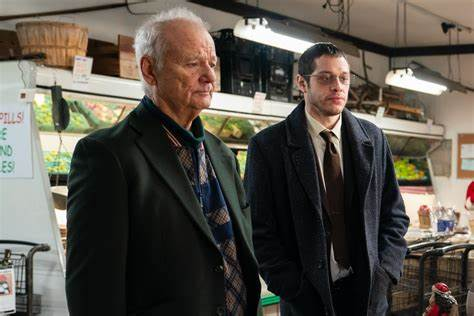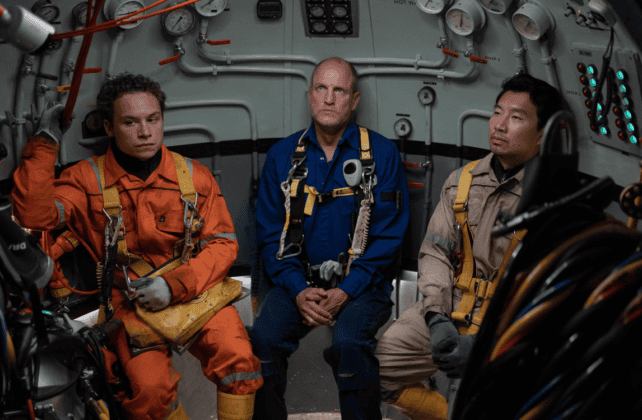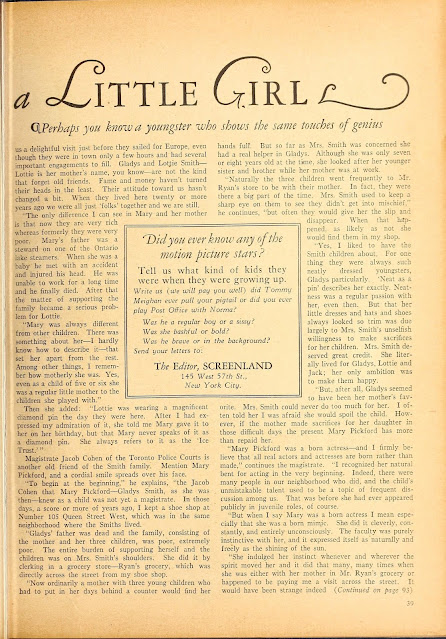.jpg)
After the finical and critical success of X-Men, Fox rushed a sequel into production. Not only did the cast from the first film return but so did director Bryan Singer and writer David Hayter. Hayter would this time be joined by Michael Dougherty and Dan Harris. This team would go on to work on two future superhero movies with director Bryan Singer, Superman Returns (2006) and X-Men: Apocalypse (2016). Michael Doughtery would later become a successful director in his own right, directing such films as Trick ‘r Treat (2009), Krampus (2015) and Godzilla: King of the Monsters (2019).
This movie begins with a brainwashed Nightcrawler (Alan Cumming) attack the United States President. Meanwhile Wolverine (Hugh Jackman) is trying to try to find some clues to his past but is unable to do such and after this search returns to Xavier's school. At same time Jean Grey is finding it harder to control her powers. However, things get even worse when Colonel William Stryker leads an attack on Xavier's school and abducts some of the students. The X-Men must team up with their former enemy Magento to stop a common enemy.
This is a top-notch superhero movie and one of the best X-Men films. X-2 takes everything that worked about the first movie and expands on it. The characters are more complex and real here. This is especially true of Wolverine, who feels completely real and human here. As he finds out who he is, through a dark and emotional backstory, he becomes a tragic and touching figure who truly serves as the heart of the film. This also allows for Hugh Jackman to really stretch his acting chops, a feat that he does brilliantly. Meanwhile, Magento perfectly rides on the edge between hero and villain, making him a much more complex and fascinating character. With the sheer number of characters in this film, it is amazing how well it balances each and every one of them. Each main character gets their own arc which feels properly realized and complete. Though the actual villain of this film may not be very complex, he does work extremely well. He feels like a major threat to our heroes and his ties to Wolverine's past means that he also gives the film a certain emotional urgency.
This movie also better delves into the themes of discrimination, hatred and the dangers and stupidity of the replacement theory. This is not just a mindless action film but one that actually leaves its audience with real food for thought. In exploring these themes, the movie is also not afraid to make its audience feel uncomfortable especially during the scenes involving Iceman's (Shawn Ashmore) parents (Jill Teed, Alf Humphreys) and brother (James Kirk). These scenes seem like such a perfect representation of discrimination as the characters don't view themselves as prejudice and actually think of themselves as being kind and compassionate people.
This movie is also a great improvement over the first when it comes to the action scenes and special effects. The special effects look much better here than in the first film and the action scenes are much more exciting, fun and tense.
.jpg) |
| Hugh Jackman and Halle Berry |
The film was a great success upon its release. It grossed $85.6 million in its opening weekend, surpassing Star Wars: Episode II – Attack of the Clones (2002) for the highest grossing opening for a Fox film. It also surpassed Harry Potter and the Chamber of Secrets (2002) for the record for largest number of screenings, a record that would later be beaten by Shrek 2 (2004). It remained in the number one box office spot for two weeks before being supplanted by The Matrix Reloaded (2003). The movie ended up grossing $214.9 million in the United States and Canada becoming the sixth highest grossing movie of 2003 in those countries. It $407.7 million worldwide becoming the ninth highest grossing film of 2003 worldwide. Its DVD release would gross $107 million in only its first five days.
The movie was also a critical success. Roger Ebert gave it three out of four stars, praising how well it handled using so many characters. Kenneth Turan of the Los Angeles Times stated that it was a rare sequel that was better than the first film. Peter Travers stated, "X2 is a summer firecracker. It's also a tribute to outcasts, teens, gays, minorities, even Dixie Chicks." Not every review was so popular though. Stephen Hunter called stated, "Of the many comic book superhero movies, this is by far the lamest, the loudest, the longest."
The movie would even win the Saturn Award for Best Science Fiction Film. The Political Film Society would recognize the film in the categories for Human Rights and Peace. In 2006 Empire Magazine would call this the greatest comic book movie of all time.
This film would receive a video game tie-in, 2003's X2: Wolverine's Revenge. This game would feature the voice of Patrick Stewart as Charles Xavier and have Wolverine's design resemble Hugh Jackman. A 2006 video game, X-Men: The Official Game would tell the story of what happened between this film and X-Men: The Last Stand (2006). That game would feature some of the voices of some of actors from the movies.
-Michael J. Ruhland








.jpg)
















